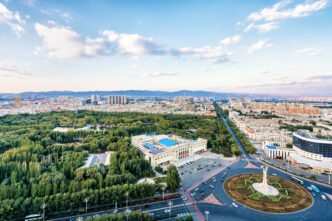Executive Summary
The Story So Far
Why This Matters
Who Thinks What?
A new opinion piece suggests that China should pivot its economic strategy to become the world’s largest importer within the next five to ten years, moving away from its long-standing export-driven model. This proposed shift, outlined ahead of the Communist Party’s 20th Central Committee Plenum scheduled for October 20-23, 2025, aims to transform China into a consumption-led economy with significant geopolitical and economic implications.
Historical Context of China’s Economic Rise
China has held the position of the world’s largest exporter of goods for 16 years, having surpassed Germany in 2009. This export prowess significantly contributed to its economic growth, enabling it to overtake Japan in 2010 as the second-largest economy globally.
By 2013, China also surpassed the United States to become the world’s largest trading nation in goods, measured by the combined value of imports and exports. These achievements highlight its transition from a domestically focused economy to a major global economic player.
The 15th Five-Year Plan and Strategic Shift
The upcoming 15th five-year plan, a comprehensive blueprint for national development, is expected to address structural imbalances in China’s economy. Historically, the plan, a legacy of Soviet-style planning, has evolved to cover various sectors including economic development, environmental protection, education, and social welfare.
A central ambition for China is to accelerate its transition towards a consumption-driven economy. This would entail prioritizing domestic demand over the previous emphasis on investment and exports.
Potential Global Impact
The proposed strategic shift from “made in China” to “consumed in China” would mark a significant evolution in the nation’s economic approach. Such a change is anticipated to have profound geopolitical and economic consequences not only for China but also for its key trading partners and the broader global economy.








